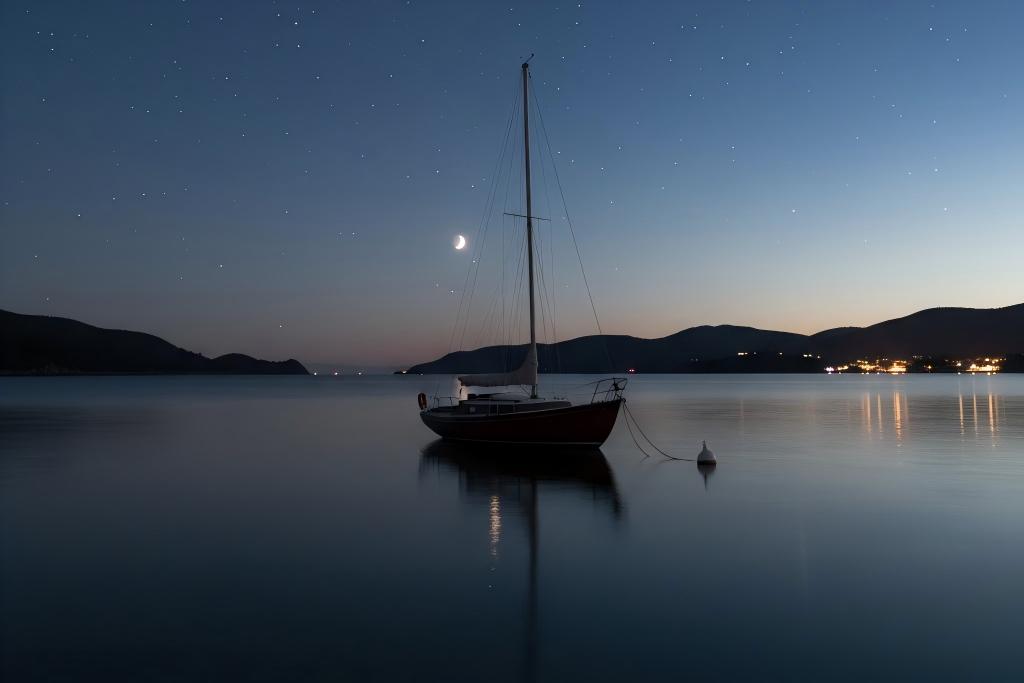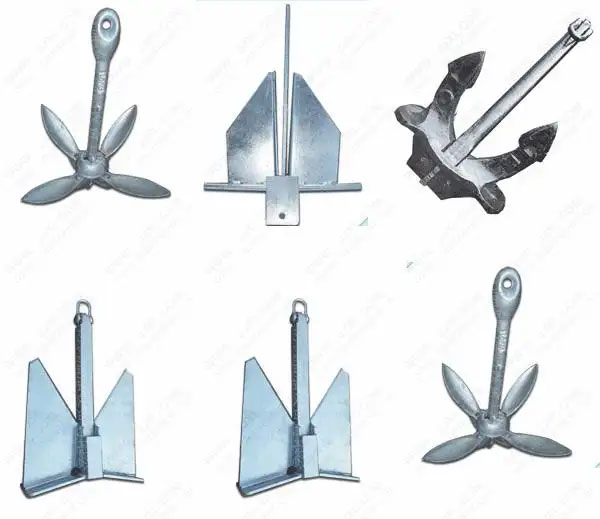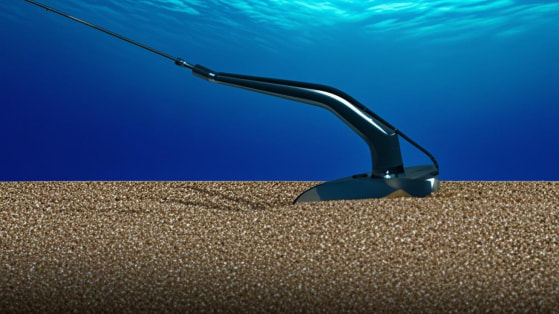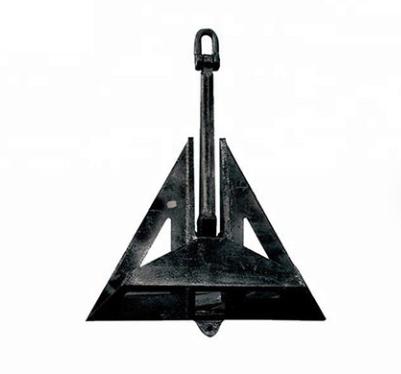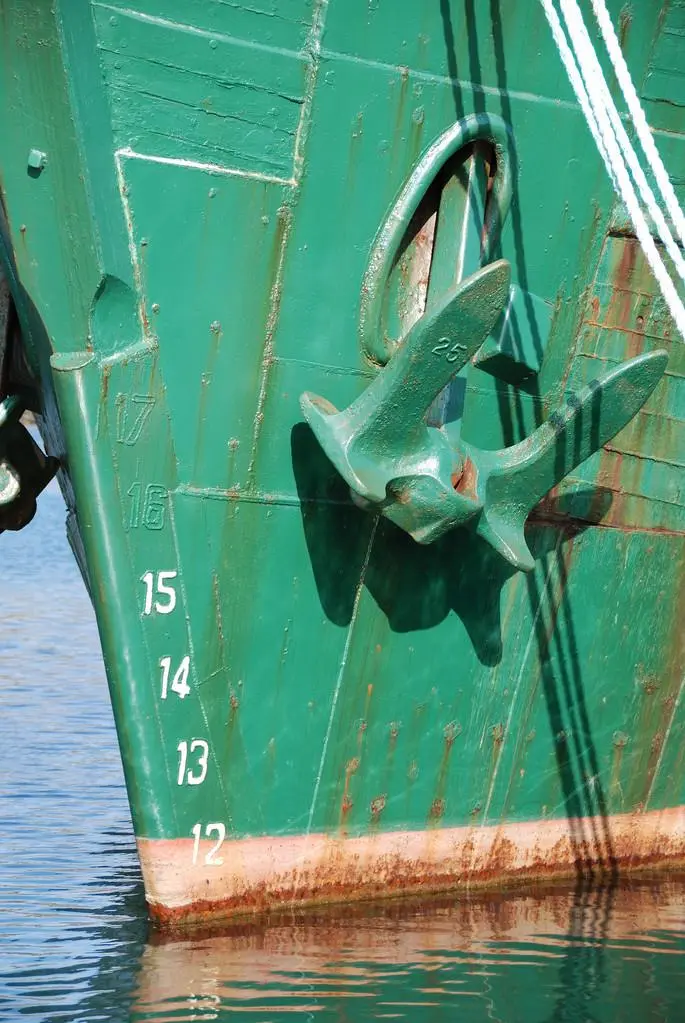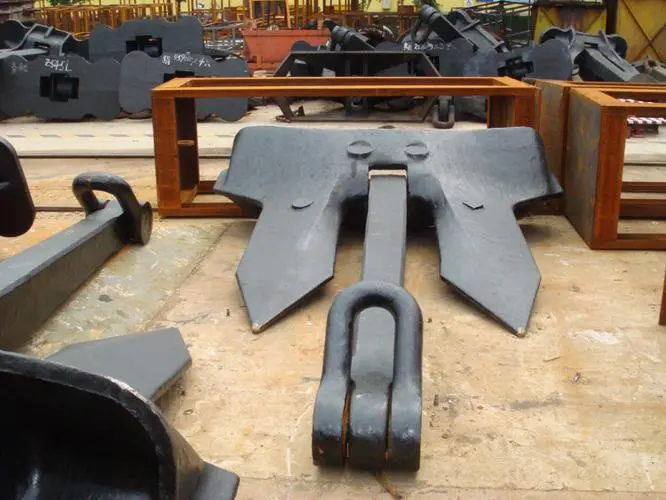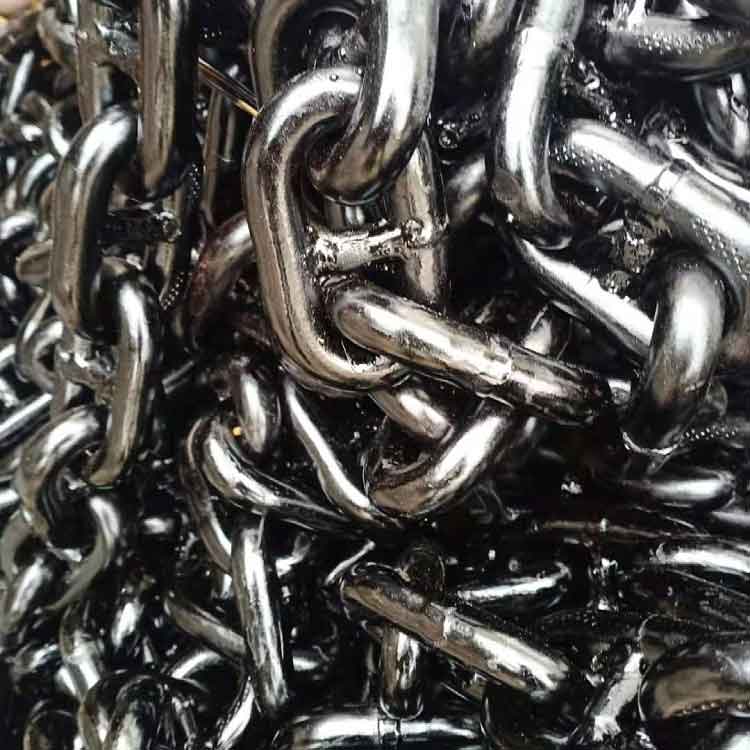Marine Anchor is an indispensable part of the ship’s equipment, and it plays a vital role in maintaining the stability of the hull when the ship is docked. In the daily use of marine anchors, it is inevitable that various problems will be encountered. When these problems are encountered, how should we solve them? This article will focus on some of the problems encountered in the use of marine anchors and how to solve them.
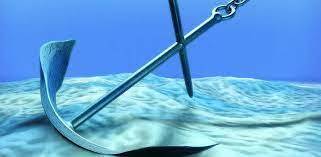
Inspection and handling of dragging anchor
1. Reasons for dragging anchor
The definition of dragging anchor: After anchoring, the anchor cannot hold the bottom of the sea, and the ship drags the anchor downward under the wind current and drifts downward.
Dragging anchor is very dangerous to ships. If you do not find out and take measures in time, it will cause serious consequences of stranding, hitting the rocks or touching the boat.
Analyze the reasons for dragging anchor from the factors that affect the holding power: the chain length is insufficient, so that the opening angle is too large, so that the anchor claws cannot hold the seabed; or the anchor action is improper, and the anchor claws are not inserted into the seabed well; or the bottom quality is too poor, Not suitable for anchoring; or the wind and waves intensify after anchoring, and the boats have strong deviations and so on.
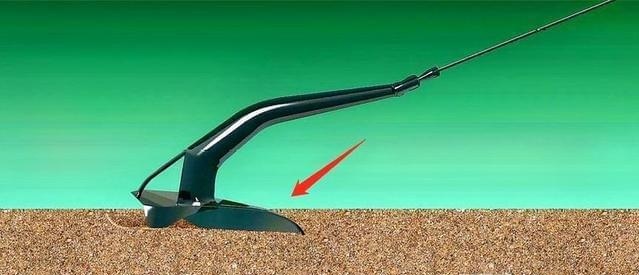
2. The method of checking dragging anchor
Anchoring circle – In order to check whether an anchor is dragging during anchoring, the anchoring circle must be drawn on the chart with the anchor point as the center. The mooring circle is the maximum range that the boat can reach after mooring. Its radius R is: R=L1+L2 (L1—the chain length actually thrown at anchor; L2—the length of the boat.)
The most basic method is to frequently and accurately determine the boat position. If the boat position moves outside the anchoring circle, it means that the anchor is dragging. Or, put down the heavy water mound at the bow of the boat, place the water mound rope 10 meters more than the water depth, and then tie it to the bow. When the water mound rope is found to be protruding forward, it means that the boat has moved anchor (in the boat is relatively stable Under the circumstances, it is an effective and simple inspection method).
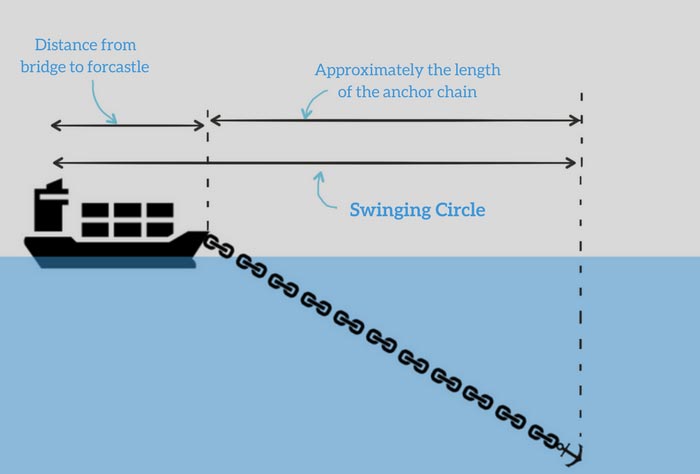
3. Measures after dragging anchor
After the dragging anchor, the person on duty shall report to the captain, and take or assist the captain to take the following actions as appropriate:
- (1) If the anchorage ground is of good quality and there is enough maneuvering area in the mooring area, the anchor chain can be properly lengthened until the anchor is not taken.
- (2) If the anchoring situation is serious and there are dangerous objects behind the boat, an alarm should be issued, the main engine should be activated, and the wind should be used to reduce the stress on the anchor chain and keep the boat in place.
While taking measures (1) and (2) above, the “Y” signal shall be hung and sounded in time in accordance with the provisions of the collision avoidance rules. Or use other communication means such as VHF to warn other ships.
- (3) If the anchor cannot be controlled after driving, it means that the original anchorage is no longer suitable for anchoring, and a decisive decision should be made to move the anchor to the anchorage or sail to the sea to avoid being passive after the arrival of strong winds and causing accidents.
Handling of special circumstances when weighing anchor
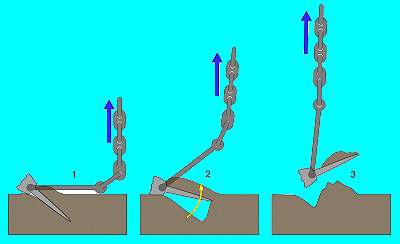
1. When the anchor fails to come up
The windlass is found to be overloaded when weighing anchor. It may be because the anchoring time is too long or the anchor is buried deep in the seabed in the quicksand area, or the anchor claws are hooked to other obstacles such as reefs. Suspend the anchoring, buckle the anchor chain with the anchor chain system, and then enter the vehicle at a low speed. After the ship moves forward, stop immediately, use the forward inertia of the ship to pull the anchor away from the seabed (can be repeated several times), and then use the windlass to continue lifting the anchor.
2. When the anchor claw hooks the submarine cable or anchor chain
After the anchor is out of water, if it is found that the anchor claw is hooking the submarine cable or chain, the anchor should be stopped, and the hooked cable or chain should be suspended with a return cable, and then use the windlass to slowly loosen the chain and wait for the claws. After disconnecting the cable or anchor chain, then lift up the anchor. Finally, loosen the return cable and put the cable or anchor chain back on the seabed. For submarine cables, a small buoy should be attached before putting it back to indicate the location and report to the relevant agency for inspection and repair. In addition, what happened should be entered in the “Log”.
3. When the anchor chain is entangled with the anchor claw
After the anchor is out of water, if you find that the anchor chain is wrapped around the anchor claw, you should first lift the anchor to the anchor hole, then hang the anchor with a steel cable or cable (use a hanger to send down the operation), and then slowly loosen the anchor Chain, and cleared by the cooperation of outboard personnel. After the anchor chain is disengaged from the anchor claw, use a windlass to retract the anchor chain so that the weight of the anchor falls on the anchor chain, and finally untie and retract the wire rope or cable.
Inspection and maintenance of marine anchors
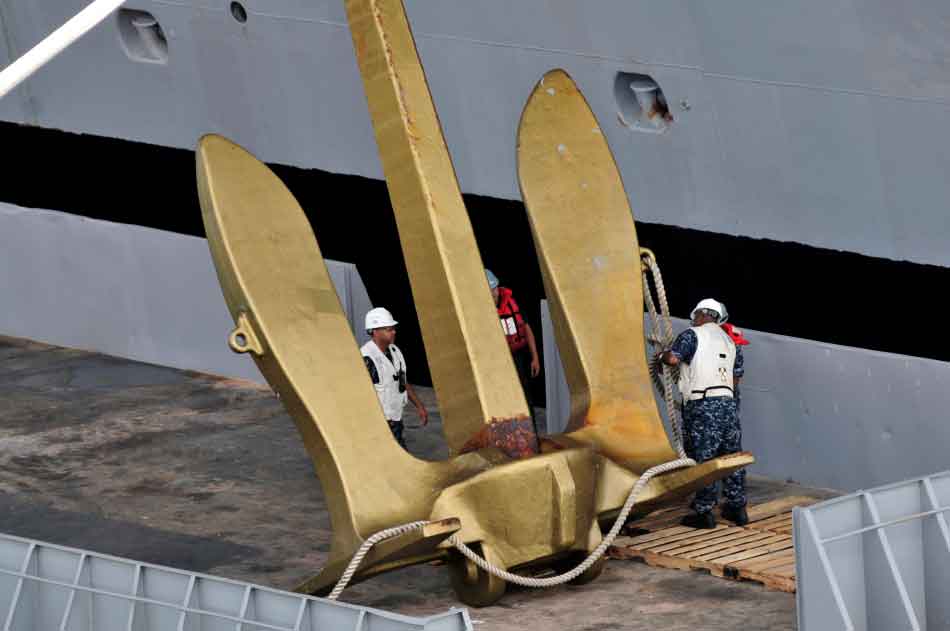
1. Daily inspection and maintenance
- Inspect and maintain the abrasion, deformation and looseness of the anchor shackle and its cross bolts.
- Check and maintain whether the cross pin of the anchor head is loose.
- Check and maintain whether the anchor claw is bent and deformed, and check whether the anchor claw catches sundries every time after the anchor is lifted.
2. Regular inspection and maintenance
The most vulnerable parts of a marine anchor are anchor claws, anchor crowns, horizontal pins and anchor shackles. Anchor claws may be bent and cracked, the grab corners are easy to wear, the horizontal pins are easy to lose, and the anchor shackle is easy to wear and cracks. According to requirements, the anchor pin is allowed to wear within 10% of the original diameter, and the weight loss of the anchor should be within 20% of the original weight. When serious damage occurs or does not meet the requirements, the anchor should be replaced, and the damaged anchor should be sent to the factory for repair.
Anchor loss and prevention
The loss of a ship’s anchor is the same as the loss of a ship’s propeller cap, which is a common occurrence. The anchor is connected to the anchor chain by an anchor shackle, so there are two situations in which the anchor is lost. One is caused by the anchor shackle, and the other is caused by the anchor chain.
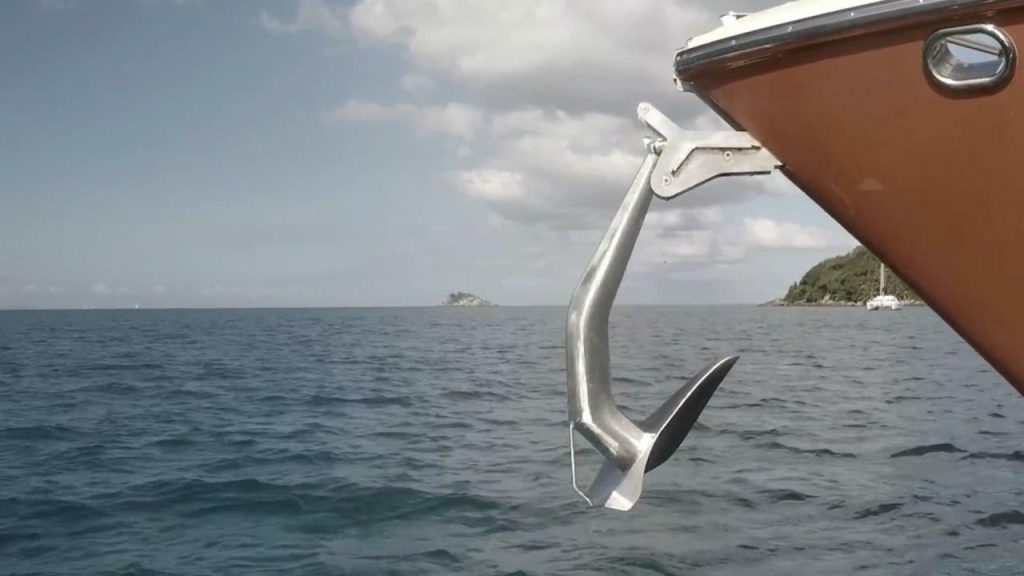
1. Caused by anchor shackle
The anchor shackle is made of steel, forged or welded, and has a pin on it. Anchors are generally hung outboard on both sides of the bow. Due to the long-term impact of strong wind and waves and the impact during retracting, the pins may lose and disengage. When the pin is disengaged, it causes the loss of the anchor.
2. Caused by anchor chain
Because the anchor chain has been used for a long time, it is severely worn. When the anchor is dropped on the hard bottom and the anchoring speed is too fast, the anchor will break and the anchor will be lost. The loss of the anchor can be prevented. The anchor shackle should be carefully checked before the ship sails, and if it is loose, it should be dealt with in time. The anchor chain shall be overhauled and replaced on time in accordance with ship inspection requirements. As long as the above two points are achieved, coupled with the proper speed when lifting the anchor, the anchor will not be lost.
With the development of science and technology and the shipbuilding industry, new types of anchors will continue to appear, which will provide reliable guarantees for the safety of ships.
Summary
The above is about some of the problems and solutions that ship anchors often encounter in daily use. If you still have anything don‘t know, you can consult us at any time. As a leading supplier of marine equipment, Boomarine provides various types of anchors. we support any third-party company inspection, classification society certificates BV, LR, ABS, NK, etc. are available. In addition, we also provide a series of customized solutions.

